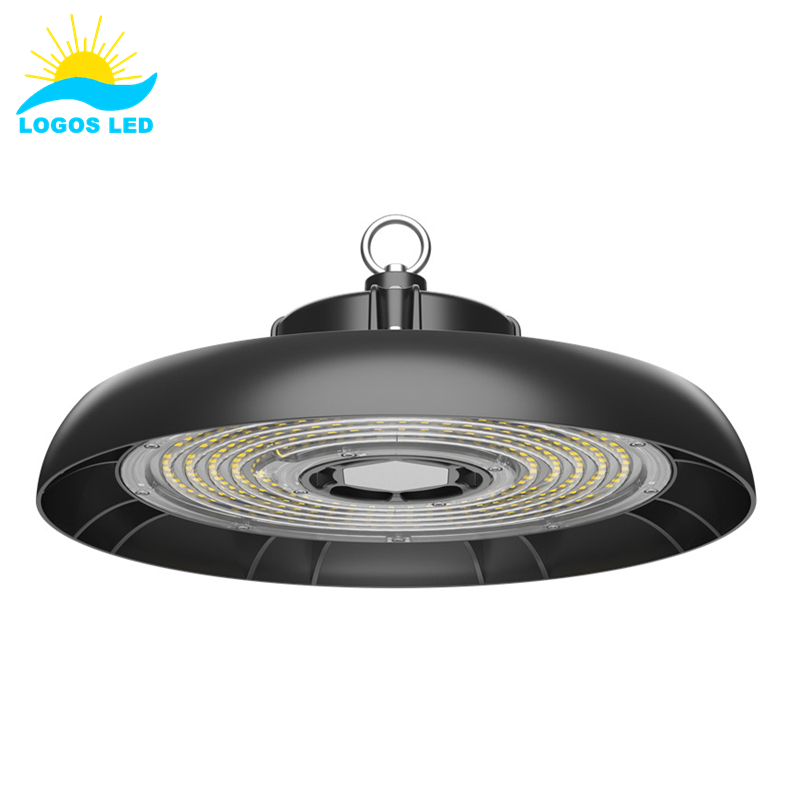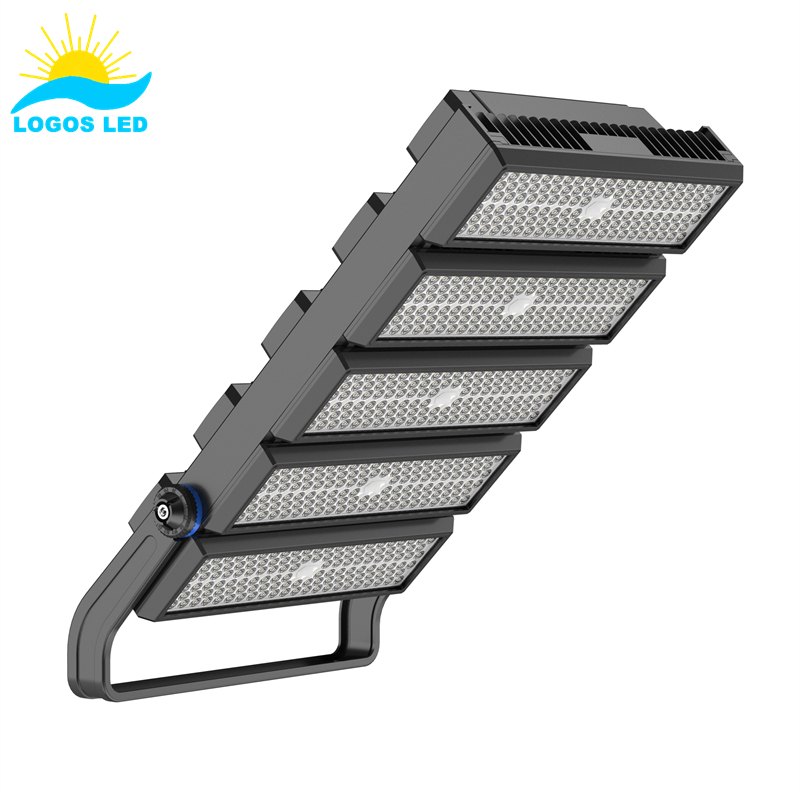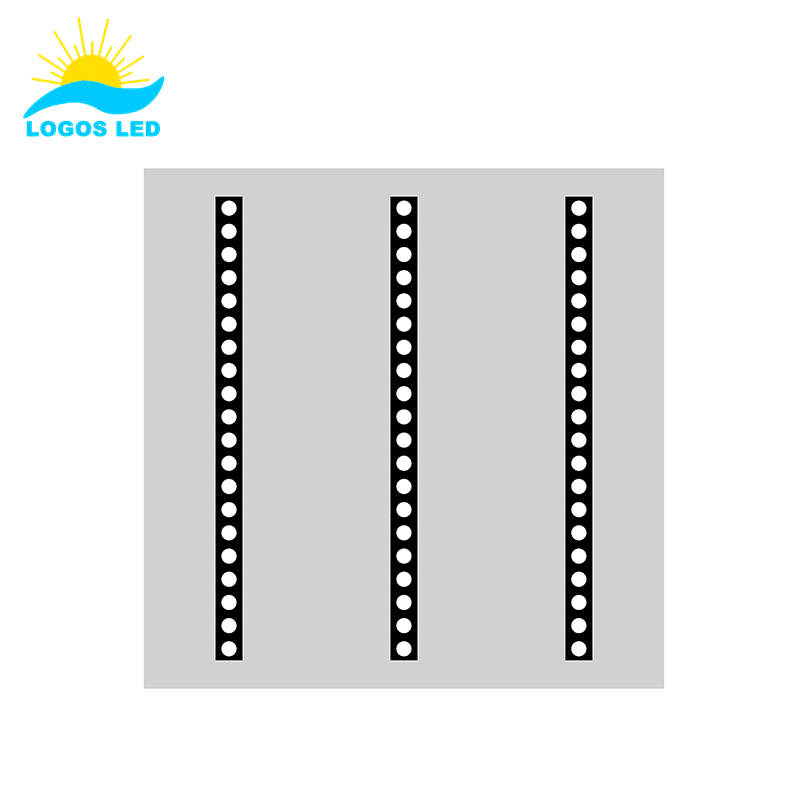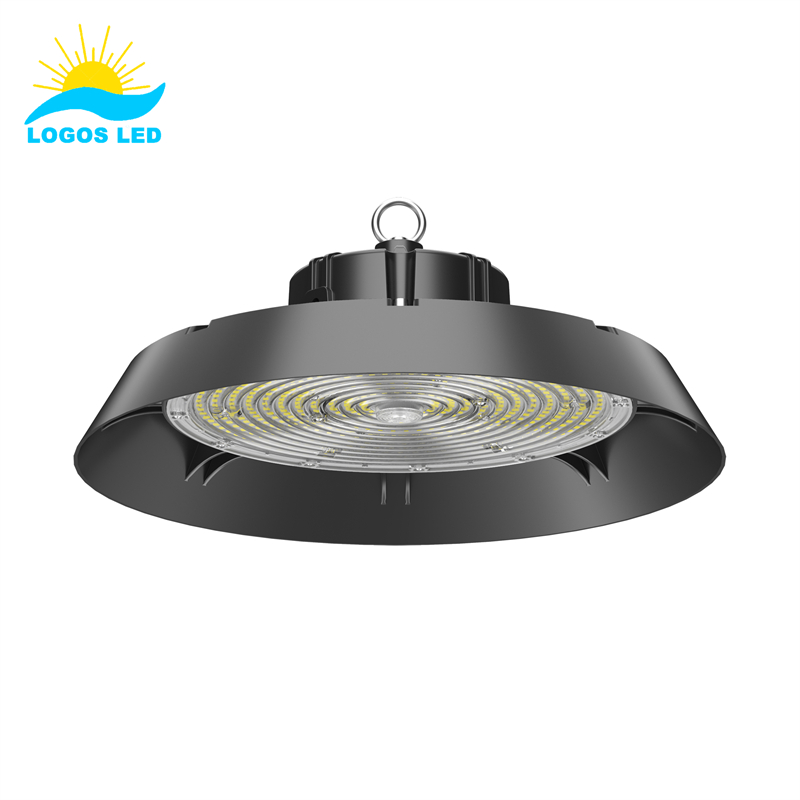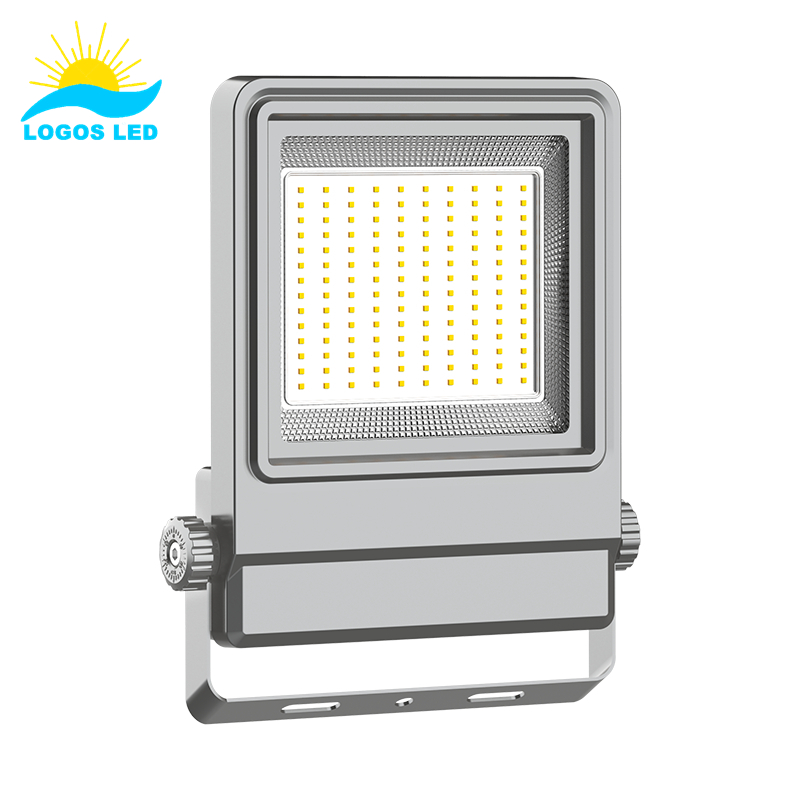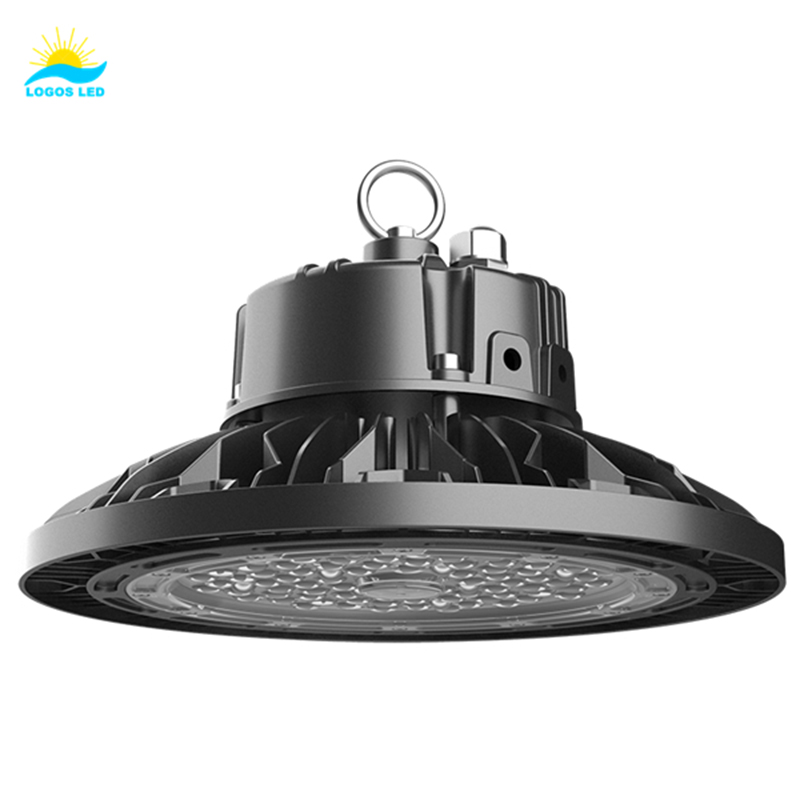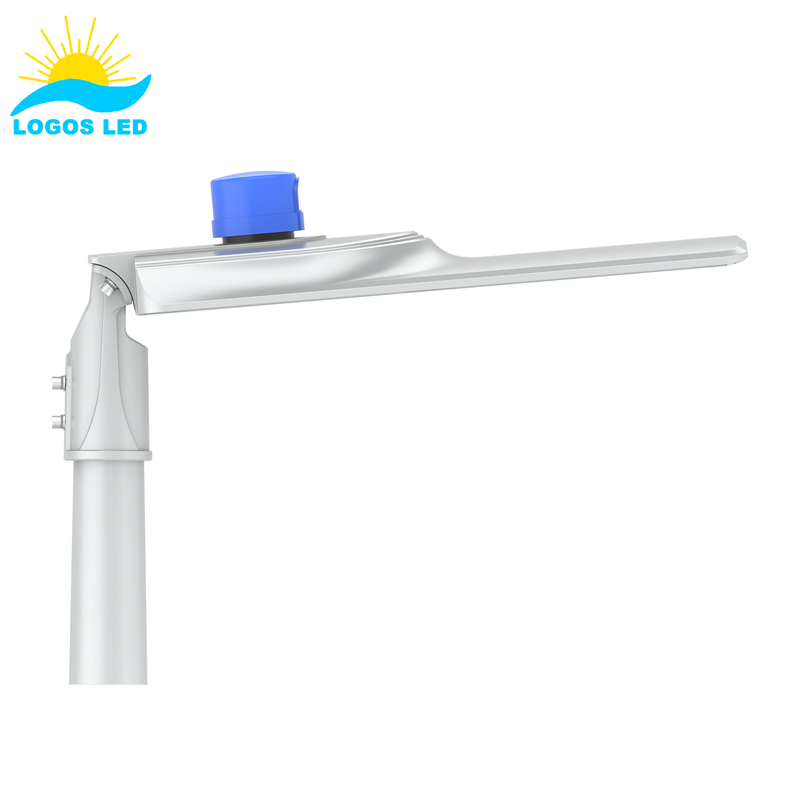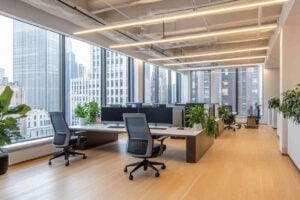Ever installed lights only to realize the space still looks dark or uneven? That’s the pain of skipping a photometric study—and it leads to wasted money, safety issues, and do-overs.
A photometric study is a digital lighting simulation that shows exactly how light will spread in a space before installation. It helps lighting engineers, wholesalers, and contractors make the right lighting choices the first time, saving time and money. This plan, often called a photometric plan, eliminates guesswork and helps meet lighting codes and standards.
Still curious? Let’s dive deeper and make sense of all the tech talk.
Table of Contents
What is photometric?
Photometric simply means “light measurement.” It’s all about the intensity, brightness, and distribution of light in a given space. We use photometric data to understand how well a light fixture will perform—how far the light goes, how evenly it spreads, and how bright it is.
These measurements are usually taken in lumens, lux, and candela. Engineers and lighting designers use this data to select the right fixtures for warehouses, factories, parking lots, and stadiums. So yes, it’s more than just picking lights off a shelf. It’s about creating lighting that works.
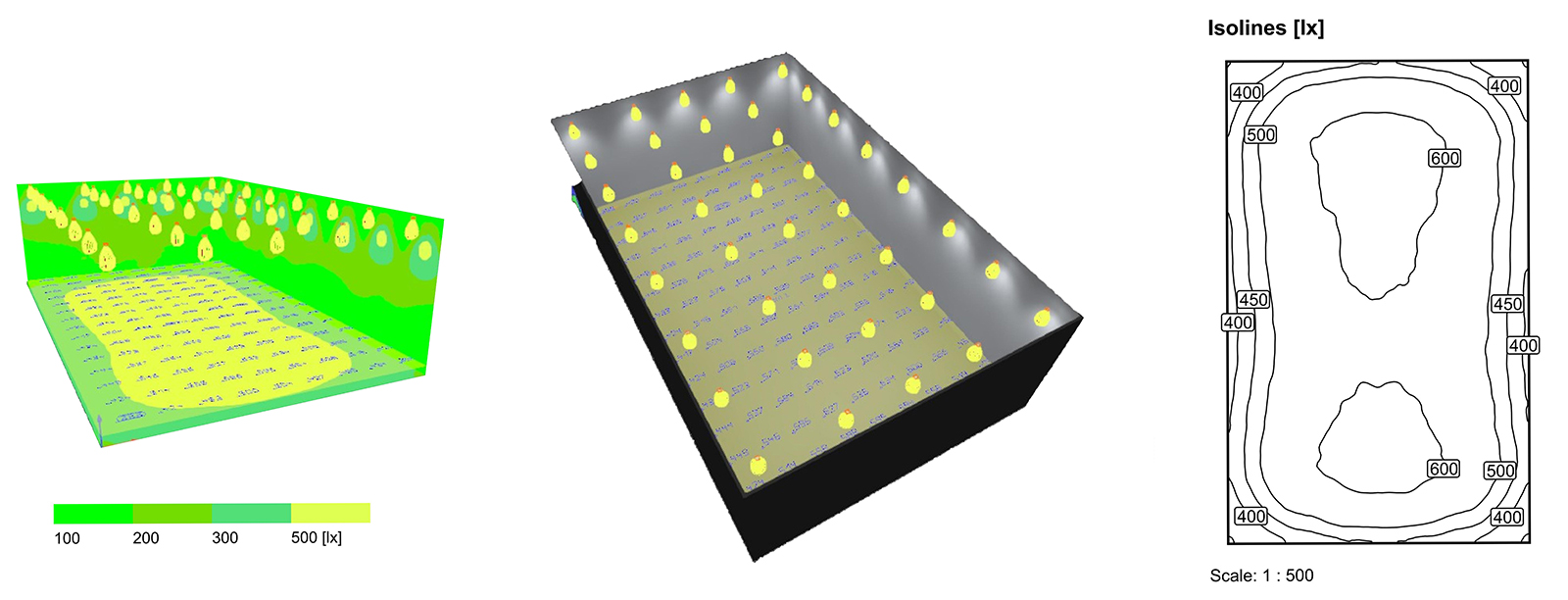
Lighting layout design for high bay industrial LED lighting
What is a photometric study?
A photometric study, also called a photometric analysis or photometric survey, is a computer-based simulation. It visually shows how lighting fixtures will illuminate an area before anything is installed. Think of it as a lighting blueprint.
We use software like DIALux or AGi32 to create 3D models of your project—factories, outdoor lots, sports fields, you name it. The software simulates how light will perform using real data from LED fixtures (like ours at Logos Lighting). The result? A photometric plan that shows you light levels, beam spreads, and dark spots.
What is the purpose of the photometric test?
The goal is simple: to ensure the right amount of light hits the right spots. It prevents over-lighting or under-lighting. A photometric test ensures your lighting setup complies with safety standards and achieves your design goals.
For example, if you’re lighting a warehouse, you need uniform lighting to avoid shadows. A photometric test lets you tweak things before the installation begins. It also helps with energy savings, selecting the right number of lights, and planning mounting heights. We include this study with many of our LED lighting projects, especially for large-scale industrial clients.
How Do You Read a Photometric Plan?
A photometric plan is a detailed layout that shows how light will be distributed across a specific area. It may look complex at first, but once you understand the key elements, it becomes a valuable tool for making smart lighting decisions.
Here’s what to focus on:
- Light Levels (Lux or Foot-Candles): These numbers show how bright each part of the area will be. Lux is commonly used internationally, while foot-candles are more common in the U.S. Higher numbers indicate brighter areas, and lower numbers show dimmer spots.
-
Uniformity Ratio: This tells you how evenly the light is spread across the space. A lower ratio (like 2:1) means the lighting is consistent, while a higher ratio could indicate areas with noticeable brightness differences. Good uniformity helps reduce shadows and improves visibility.

Lighting Uniformity Measurement
- Beam Angles: These show how wide the light spreads from each fixture. A narrow beam focuses light in a tight area, while a wide beam covers more space but with less intensity. Beam angles help determine fixture spacing and coverage.
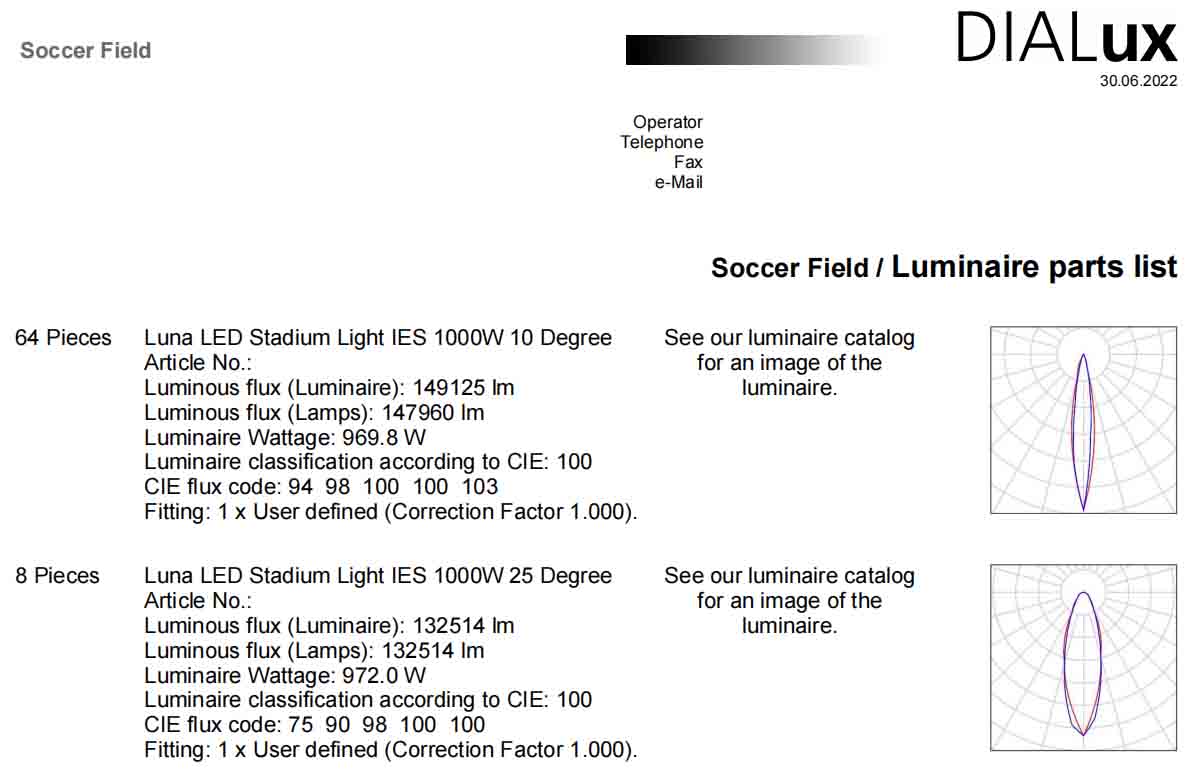
Dialux Design with IES Files
- Fixture Placement: The plan shows exactly where each light will be installed, along with its orientation and height. Proper placement ensures full coverage and avoids dark spots or wasted light.
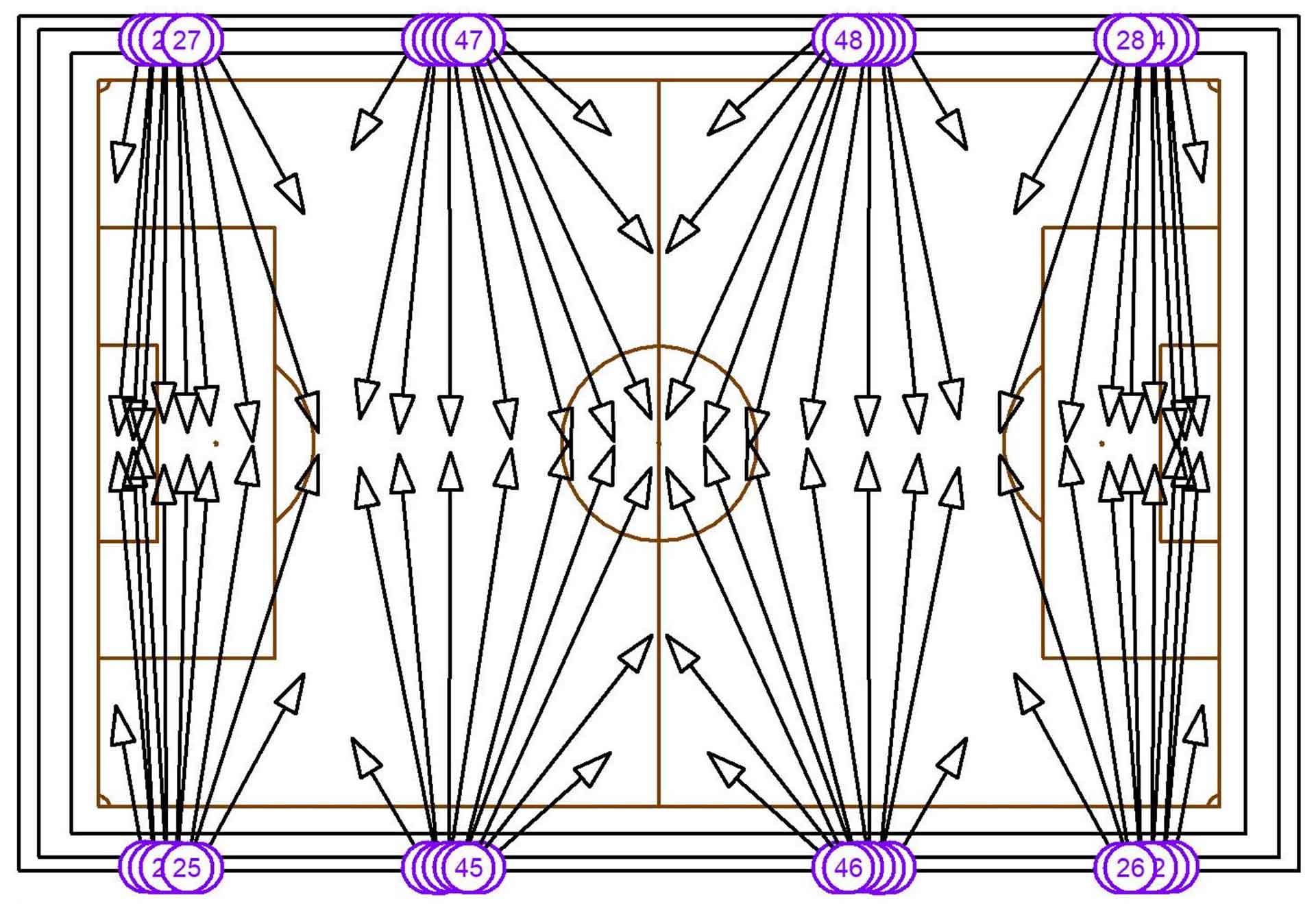
Stadium Lamp Layout Design
- Color-Coded Zones: Many photometric plans use color gradients to visualize brightness. For example, yellow or white areas often show the brightest zones, while blue or purple areas indicate lower light levels. This makes it easy to spot gaps or overlit regions.
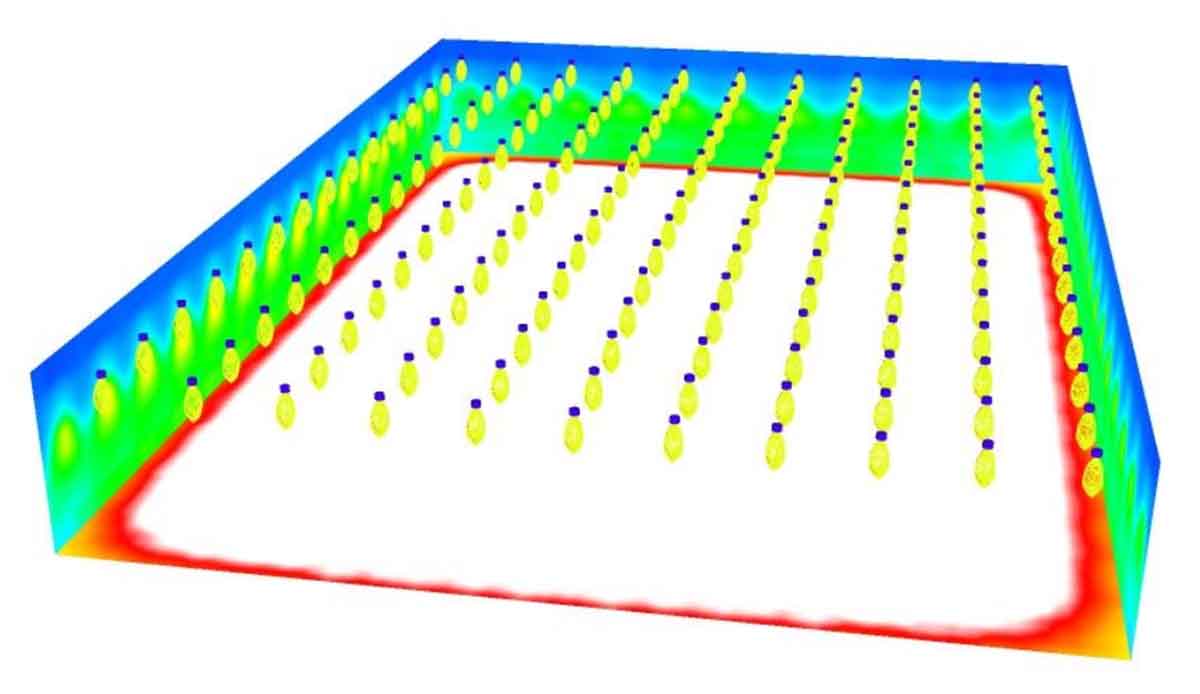
Dialux Simulation
We always help our clients interpret these plans, explain what the numbers mean, and offer revisions based on their specific needs. Whether you’re lighting a warehouse, parking lot, or sports arena, a clear photometric layout makes the switch to LED lighting more effective and stress-free.
How much does a photometric study cost?
Here’s the honest truth—costs vary. Some firms charge anywhere from $200 to $1,000 depending on the size and complexity of the site. But at Logos Lighting, we provide this service free with most project quotes. That’s right. You just need to provide your site drawings and requirements, and we’ll take care of the rest.
We know how to do a photometric analysis efficiently, and we use our in-house DIALux specialists to speed things up. For big projects, like sports fields or ports, the value of a free photometric study can’t be overstated.
What are IES Files for lights
IES files are the secret sauce in a photometric survey. These are digital files provided by lighting manufacturers that contain the photometric data of their fixtures. IES stands for Illuminating Engineering Society, and these files define exactly how a light spreads.
When we do a study, we load the IES files of our LED fixtures (like high bays or floodlights) into the software. That allows for ultra-accurate simulations. Want to try our high bay LEDs in your warehouse plan? We’ll send you the IES files to plug into your own software or let us run it for you.
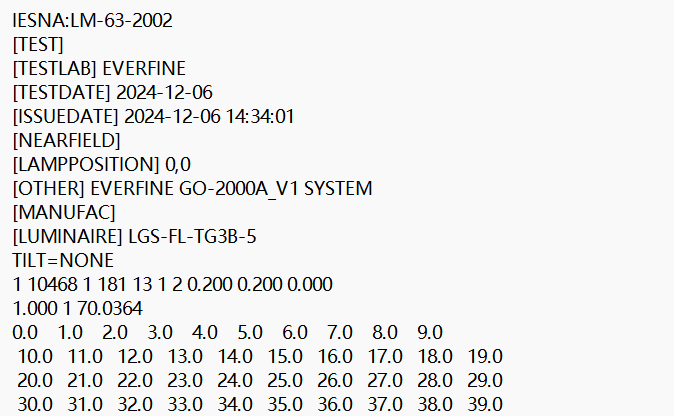
Structure of an IES File
Where Can We Use Photometric Studies?
Photometric studies are essential wherever lighting performance matters. These detailed plans help ensure that a space is not just lit—but lit correctly, efficiently, and safely. Here are some of the most common places where photometric studies are used:
- Warehouses: To make sure shelving areas, loading docks, and work zones are evenly and brightly lit to improve safety and productivity.
- Parking Lots: To provide uniform lighting that enhances visibility, reduces crime risk, and complies with local codes.
- Stadiums and Sports Arenas: To deliver high-intensity, glare-free lighting for both players and spectators while meeting broadcast standards.
- Gas Stations: To make fueling areas safe and inviting, while avoiding dark spots or overlit areas that waste energy.
- Street Lighting: To ensure roads and sidewalks are well-lit for pedestrians and drivers without light pollution or glare.
- Industrial Plants: To support worker safety and reduce accidents in areas with heavy machinery or 24/7 operations.
- Shopping Malls and Retail Centers: To create an appealing environment for shoppers while enhancing security in parking and entrance areas.
Photometric studies are not just technical paperwork—they’re the foundation of a successful lighting project. At Logos Lighting, we’ve helped clients from Spain to South Africa design systems that meet both local codes and user expectations. We make sure the lighting design is done right the first time so you save time, energy, and money.

Outdoor Tennis Court Lighting Layout
What Do You Need to Get a Photometric Study Done?
Getting a photometric study is easier than you might think. You don’t need to be a lighting expert or have a perfect blueprint. Just provide a few basic details, and we’ll handle the rest. Here’s what we need:
- Floor Plans or Site Drawings: These can be in PDF, DWG, or even a simple hand-drawn sketch. As long as we can understand the layout, we can work with it.
- Ceiling Height or Pole Height: This helps us determine fixture type, mounting angle, and spacing for proper coverage.
- Desired Light Levels (if known): Let us know if you’re aiming for a specific lux level or following a local lighting code. If you’re unsure, we’ll suggest what works best based on your application.
- Application Type: Tell us where the lights will be used—like a warehouse, factory, port, sports field, or parking lot. This helps us choose fixtures and beam angles suited for the space.
Once we have that info, our team will suggest the best LED fixtures for the job—often including models from our LED high mast series. We run simulations using real IES photometric data to create a detailed lighting layout tailored to your site.
You’ll receive a full report, usually within 1–2 business days. It’s fast, accurate, and helps you move forward with confidence on your LED lighting project.
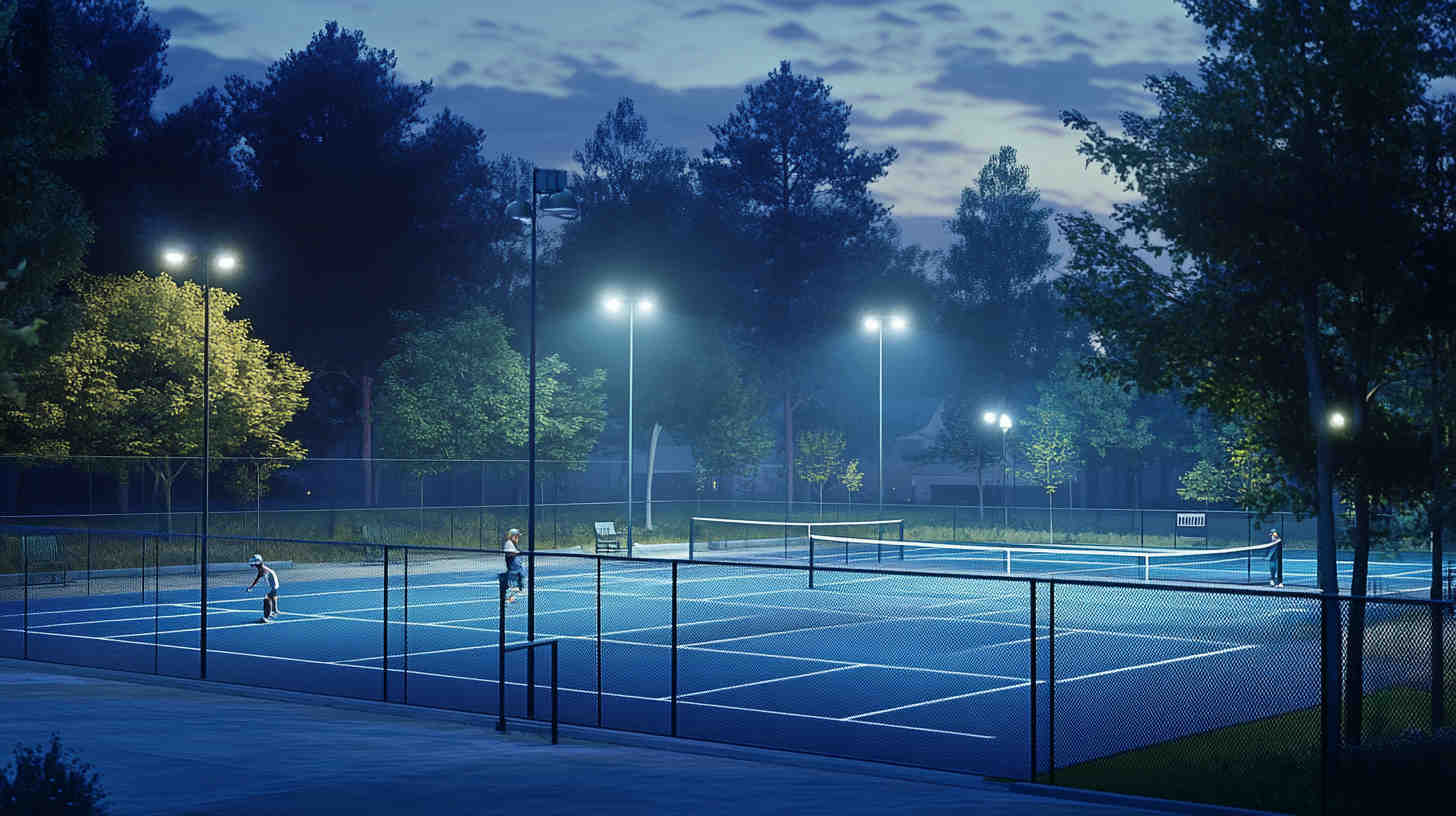
How to Perform a Photometric Study
A photometric study might sound technical, but it’s really a step-by-step process to ensure the lighting design meets the goals of your project. At Logos Lighting, we handle all the technical work and deliver a clear, professional report to guide your lighting decisions. Here’s a simplified breakdown of how we do it:
1. Import Site Drawings into DIALux
We begin by uploading your floor plans or site layouts into DIALux, the industry-standard lighting simulation software. This gives us a digital model to work with.
2. Define Surfaces, Mounting Heights, and Room Dimensions
We set up the space according to the physical dimensions and details you provide, including wall and ceiling surfaces, pole or fixture mounting heights, and any obstacles that might affect lighting.
3. Import IES Files of Selected Lights
Next, we bring in IES files—these are digital profiles of how each LED fixture distributes light. These come directly from our lighting products and are used for accurate simulations.
4. Place Lights in the Model
We position the selected LED fixtures within the space, adjusting spacing, height, and angle based on the design needs and your lighting goals.
5. Run the Simulation
The software calculates light levels, spread, and uniformity across the entire area. It shows where the light reaches, how strong it is, and whether it meets your specifications.
6. Analyze Light Distribution, Uniformity, and Lux Levels
We review the results for brightness, coverage, and compliance with any required standards. This step ensures the design avoids dark spots, overlighting, and energy waste.
7. Make Adjustments and Finalize the Plan
If needed, we tweak the layout—changing fixture types, positions, or beam angles—until the lighting plan performs exactly as expected.
Finally, we send you a polished, easy-to-understand photometric report. It includes layout drawings, lux readings, and performance charts. This study is one of the most valuable services we offer because it helps you avoid costly mistakes and ensures your project succeeds from day one.

Summary
A photometric study helps you plan your lighting right before you ever hang a single fixture. It saves money, avoids lighting mistakes, and ensures code compliance. Whether it’s a small room or a full industrial site, this study can guide your every lighting decision.
Need a photometric plan or help with your next lighting project? Contact us at www.logosled.com—we’ll make your lighting work smarter, not harder.
Request A Free Quote Now!
Send us a message if you have any questions or request a quote. We will get back to you ASAP!



